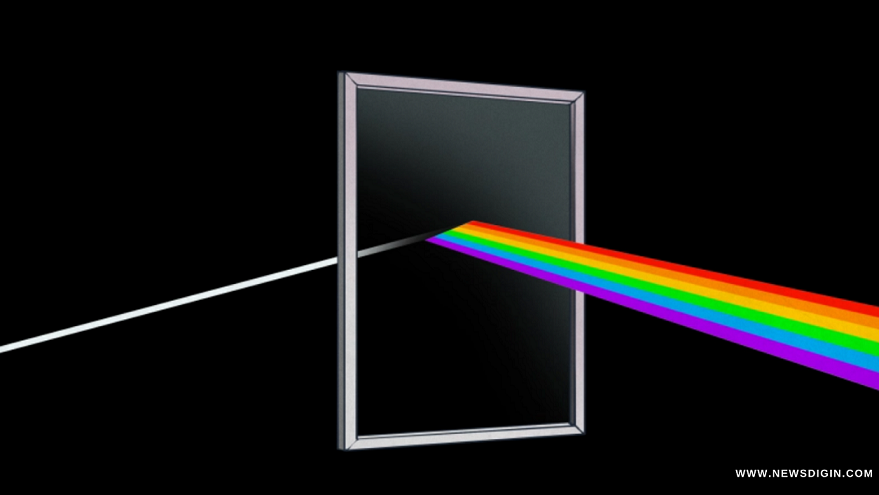Prism Lighting, A Way Of Steering Daylight: An early use of electricity was the incandescent light bulb, and its significance cannot be overstated.
People did not, however, live in darkness prior to the invention of electric lighting; instead. They devised strategies for rerouting sunlight to illuminate interior spaces.
Understanding the fundamental principles of optics. The work of skilled glassmakers who built prism tiles, deck prisms, and vault lights allowed this to be possible.
Today, these more than a century-old techniques are still in use. Whether it’s for LED diffusion or increasing LCD display brightness.
Prism Lighting, A Way Of Steering Daylight

LET’S GET SEMANTICS OUT OF THE WAY RIGHT A
When it comes to prism definitions, opticians tend to be sloppy. Wikipedia describes.
It as a transparent optical element with flat, polish surfaces, at least one of which is angle, even though many of them are not geometric prisms.
Several of the prisms in this collection defy this definition, as illustrate in the images below. Prisms are use to reflect, invert, rotate, disperse, steer, and collimate light.
Browse your favourite optics supplier’s catalogue for a variety of prisms.
Please note that although dispersive prisms split a white light beam into its spectrum of colours, we are not particularly interest in them as album covers.
The ability of prisms to refract and reflect light is an important property discuss in this article.
CONVENIENT METHOD FOR INSULATION OF LIGHT UNDER THE DECK
Prism lighting is widely use in ships, where it was particularly effective.
Deck prisms were installed to direct sunlight into the spaces below decks because open flames could have disastrous consequences on a wooden ship.
When Edward Wyndus applied for his first deck light patent in 1684. He called it it is the great and durable increse of light by extraordinary glasses and lamps”.
Prisms on the deck were typically 10 to 15 centimetres in size. The flat top was flush with the deck and the prism point refracted and directed sunlight downward.
With the reversibility of light paths, deck prisms were useful for spotting fires beneath the deck.
AMPLIFICATION OF THE LADIES SHOPPERS
For sidewalk vaults and basements, the idea of prism lighting was adapt in the 19th century to vault lights that directed sunlight there.
These grates were more comfortable to walk on than open ones because they kept out the rain while still providing some protection from it.
The latter, despite its impracticality, was apparently viewed favourably by shop owners as a way to draw women closer to their storefronts.
Initially, vault covers were made of flat glass or round plano-convex lenses.
A ship deck prism’s shape was adapted in 1871 for vault lighting by Edward Hayward. His prisms, made of glass, did more than just let light through.
GAS CYLINDERS AND PRISM TILES ARE BOTH AVAILABLE
When vertical windows became popular, prism glass start to use as well. It was the Luxfer Prism Company, which began selling prism tiles.
In 1897, base on a previous patent by James G. Pennycuick, that is the biggest player in the game. The square Luxfer tiles, each measuring 4 inches in width, were commonly use to cover storefront windows.
LED DIFFUSERS AND LCD SCREENS
Despite the fact that LEDs are more energy-efficient than incandescent lamps and electricity is no longer prohibitively expensive.
Using sunlight for interior lighting is still a worthwhile goal, if only for the better colour rendition.
Prism tiles have been replaced by daylight redirecting window films in the modern era.
The microstructured saw-tooth pattern on the thin plastic films reflects light upwards to the ceiling, where it is reflect and penetrates deeper into the building.
The film, according to 3M, can reduce lighting energy costs by up to 52%.
If you’ve ever wanted to diffuse LEDs, you’re probably familiar with prism films.
An LED array’s light is homogenise with the help of micro prism sheets make of polystyrene or polycarbonate.
If you’ve ever taken apart an LCD screen, you’ve probably notice that there are several plastic sheets sandwich between the glass and the metal frame. The backlight screen is make brighter by using prism films.
Using a prism film will increase on-axis brightness while decreasing the viewing angle. Light is converge in both the horizontal and vertical planes by stacking these films with a 90-degree rotation.
These films are also beginning to appear in high-end LED lighting applications, and it’s only a matter some time before they became widely available.
The prism was slain by the incandescent bulb; the LED is slaying the LED, and the prism is being rediscover. What was once outdate has become contemporary once more.
Prisms are like an optical swiss army knife because they is use for a variety of optical tasks.
The ability for redirecting light through simply shape transparent bodies. It has many useful applications even though manufacturing techniques, materials, shapes, and dimensions have evolved over the centuries.
Also Read:


















































